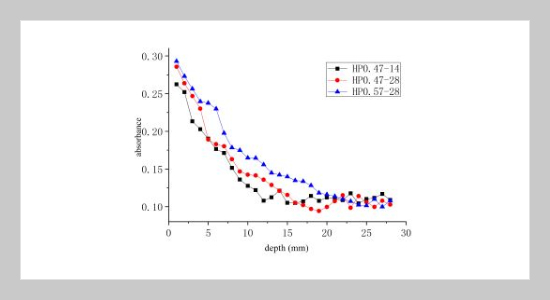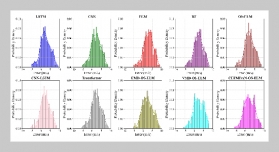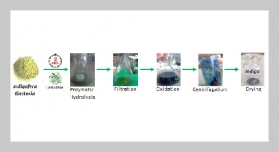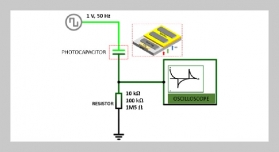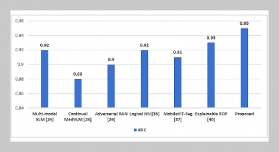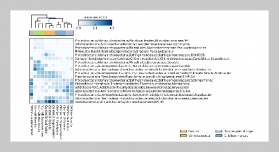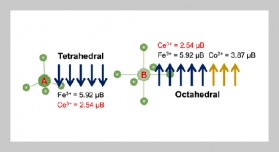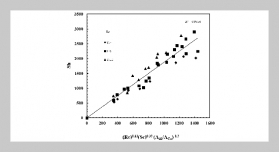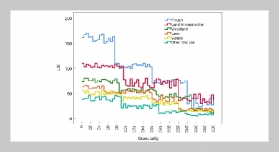REFERENCES
- [1] C. J.Fang G.X.Mei, (1996) “Influence of carbonation on properties of concrete" Resources and Hydropower Engineering (02): 58–64.
- [2] N. S. U. Suba, P. Srinivasan, (2016) “A Review on Carbonation Study in Concrete" Materials Science and Engineering 263(3):
- [3] P. Liu, Y. Chen, and Z. Yu, (2020) “Effects of temperature, relative humidity and carbon dioxide concentration on concrete carbonation" Magazine of Concrete Research 72(18): 936–947.
- [4] B. Šavija and M. Lukovi´c, (2016) “Carbonation of cement paste: Understanding, challenges, and opportunities" Construction and Building Materials 117: 285– 301.
- [5] Y. S. Ji, L.-l. Zhang, H.-r. Ma, C.-y. XU, and Z.-l. WANG, (2012) “Experimental research and mechanism analysis on semi-carbonation zone in concrete" Journal of Building Materials and Structure 15(5): 624–628.
- [6] A. Merah, Y. Korichi, and M. M. Khenfer, (2020) “Effect of cement types on carbonation depth of concrete" Journal of Building Materials and Structures 7(1): 87–94.
- [7] J. Wang, P.-L. Ng, H. Su, J. Chen, and J. Du, (2019) “Effect of concrete stress states on carbonation depth of concrete" Journal of Civil Engineering and Management 25(6): 518–530.
- [8] D. C. Zhang, Y. F. Zhang, and X. Cheng, (2008) “Research on resisting carbonization of concrete of sulphoaluminate cement" Journal of the Chinese Ceramic Society: 258–263.
- [9] D. Zhang, T. Liu, and Y. Shao, (2020) “Weathering carbonation behavior of concrete subject to early-age carbonation curing" Journal of Materials in Civil Engineering 32(4): 4020038.
- [10] V. G. Papadakis, M. N. Fardis, and C. G. Vayenas, (1992) “Hydration and carbonation of pozzolanic cements" Materials Journal 89(2): 119–130.
- [11] Y. H. Qu, (2013) “Research status of carbonation in concrete engineering" Ready-Mixed Concrete 01: 29–45.
- [12] V. G. Papadakis, C. G. Vayenas, and M. N. Fardis, (1991) “Experimental investigation and mathematical modeling of the concrete carbonation problem" Chemical Engineering Science 46(5-6): 1333–1338.
- [13] T. Fukushima, Y. Yoshizaki, F. Tomosawa, and K. Takahashi, (1998) “Relationship between neutralization depth and concentration distribution of CaCO3-Ca (OH)2 in carbonated concrete" Special Publication 179: 347–364.
- [14] Q. Pu, Y. Yao, L. Wang, X. Y. Liu, and X. X. Shi, (2017) “An investigation of the pH variation in carbonated concrete under different depth" New Building Materials 44(01): 1–4.
- [15] L.J. Parrott, (1994) “A Study of Carbonation-induced Corrosion" Magazine of Concrete Research 46(166): 23–28.
- [16] W. Sha and G. B. Pereira, (2001) “Differential scanning calorimetry study of hydrated ground granulated blastfurnace slag" Cement and concrete research 31(2): 327–329.
- [17] L. J. Parrott and D. C. Killoh, (1989) “Carbonation in a 36 year old, in-situ concrete" Cement and Concrete Research 19(4): 649–656.
- [18] V. G. Papadakis, C. G. Vayenas, and M. N. Fardis, (1991) “Fundamental modeling and experimental investigation of concrete carbonation" Materials Journal 88(4): 363–373.
- [19] G. Villain, M. Thiery, and G. Platret, (2007) “Measurement methods of carbonation profiles in concrete: Thermogravimetry, chemical analysis and gammadensimetry" Cement and concrete research 37(8): 1182–1192.
- [20] F. P. Torgal, S. Miraldo, J. A. Labrincha, and J. De Brito, (2012) “An overview on concrete carbonation in the context of eco-efficient construction: Evaluation, use of SCMs and/or RAC" Construction and Building Materials 36: 141–150.
- [21] J. Ibáñez, L. Artús, R. Cuscó, Á. López, E. Menéndez, and M. C. Andrade, (2007) “Hydration and carbonation of monoclinic C2S and C3S studied by Raman spectroscopy" Journal of Raman Spectroscopy 38(1): 61–67.
- [22] K. Garbev, P. Stemmermann, L. Black, C. Breen, J. Yarwood, and B. Gasharova, (2007) “Structural features of C–S–H (I) and its carbonation in air—a Raman spectroscopic study. Part I: fresh phases" Journal of the American Ceramic Society 90(3): 900–907.
- [23] S. Martinez-Ramirez, S. Sanchez-Cortes, J. V. Garcia- Ramos, C. Domingo, C. Fortes, and M. T. Blanco- Varela, (2003) “Micro-Raman spectroscopy applied to depth profiles of carbonates formed in lime mortar" Cement and Concrete Research 33(12): 2063–2068.
- [24] S. K. Sharma, A. K. Misra, P. G. Lucey, S. M. Angel, and C. P. McKay, (2006) “Remote pulsed Raman spectroscopy
of inorganic and organic materials to a radial distance of 100 meters" Applied spectroscopy 60(8): 871–876.
- [25] S. K. Sharma, (2007) “New trends in telescopic remote Raman spectroscopic instrumentation" Spectrochimica Acta Part A: Molecular and Biomolecular Spectroscopy 68(4): 1008–1022.
- [26] G. W. Groves, A. Brough, I. G. Richardson, and C. M. Dobson, (1991) “Progressive changes in the structure of hardened C3S cement pastes due to carbonation" Journal of the American Ceramic Society 74(11): 2891–2896.
- [27] M. Castellote, L. Fernandez, C. Andrade, and C. Alonso, (2009) “Chemical changes and phase analysis of OPC pastes carbonated at different CO 2 concentrations" Materials and Structures 42(4): 515–525.
- [28] B. Dong, G. Shi, P. Dong, W. Ding, X. Teng, S. Qin, Y. Liu, F. Xing, and S. Hong, (2018) “Visualized tracing of rebar corrosion evolution in concrete with x-ray micro-computed tomography method" Cement and Concrete Composites 92: 102–109. DOI: 10 . 1016 / j . cemconcomp.2018.06.003.
- [29] J. Han, W. Sun, G. Pan, and W. Caihui, (2013) “Monitoring the evolution of accelerated carbonation of hardened cement pastes by X-ray computed tomography" Journal of materials in civil engineering 25(3): 347–354.
- [30] J. M. Ortega, I. Sánchez, and M. A. Climent, (2015) “Impedance spectroscopy study of the effect of environmental conditions in the microstructure development of OPC and slag cement mortars" Archives of Civil and Mechanical Engineering 15(2): 569–583.
- [31] Q. Qiu, (2020) “A state-of-the-art review on the carbonation process in cementitious materials: Fundamentals and characterization techniques" Construction and Building Materials 247: 118503.
- [32] E. Gruyaert, P. Van den Heede, and N. De Belie, (2013) “Carbonation of slag concrete: Effect of the cement replacement level and curing on the carbonation coefficient–Effect of carbonation on the pore structure" Cement and Concrete Composites 35(1): 39–48.
- [33] S. Lim and P. Mondal, (2015) “Effects of incorporating nanosilica on carbonation of cement paste" Journal of Materials Science 50(10): 3531–3540.
- [34] Y. Lo and H. M. Lee, (2002) “Curing effects on carbonation of concrete using a phenolphthalein indicator and Fourier-transform infrared spectroscopy" Building and environment 37(5): 507–514.
- [35] C.-F. Chang and J.-W. Chen, (2006) “The experimental investigation of concrete carbonation depth" Cement and Concrete Research 36(9): 1760–1767.
- [36] A. Hidalgo, C. Domingo, C. Garcia, S. Petit, C. Andrade, and C. Alonso, (2008) “Microstructural changes induced in Portland cement-based materials due to natural and supercritical carbonation" Journal of Materials Science 43(9): 3101–3111.
- [37] W. Ashraf, (2016) “Carbonation of cement-based materials: Challenges and opportunities" Construction and Building Materials 120: 558–570.
- [38] GB/T 50082-2009, (2009) “Standard for long-term performance and durability test methods of ordinary concrete" China Construction Industry Press, Beijing:
- [39] J. Z. Liu, (2005) “A Review of Carbonation in Reinforced Concrete (): Mechanism of Carbonation and Evaluative Methods" Concrete 11: 10–13.
- [40] C. T. Tam, H. B. Lim, and K. Sisomphon, (2008) “Carbonation of concrete in the tropical environment of Singapore" The IES Journal Part A: Civil Structural Engineering 1(2): 146–153.
- [41] J. M. Chi, R. Huang, and C. C. Yang, (2002) “Effects of carbonation on mechanical properties and durability of concrete using accelerated testing method" Journal of marine science and technology 10(1): 14–20.
- [42] F. B. R. Neves and J. D. Brito, (2013) “Field assessment of the relationship between natural and accelerated concrete carbonation resistance" Cement Concrete Composites (41): 9–15.


